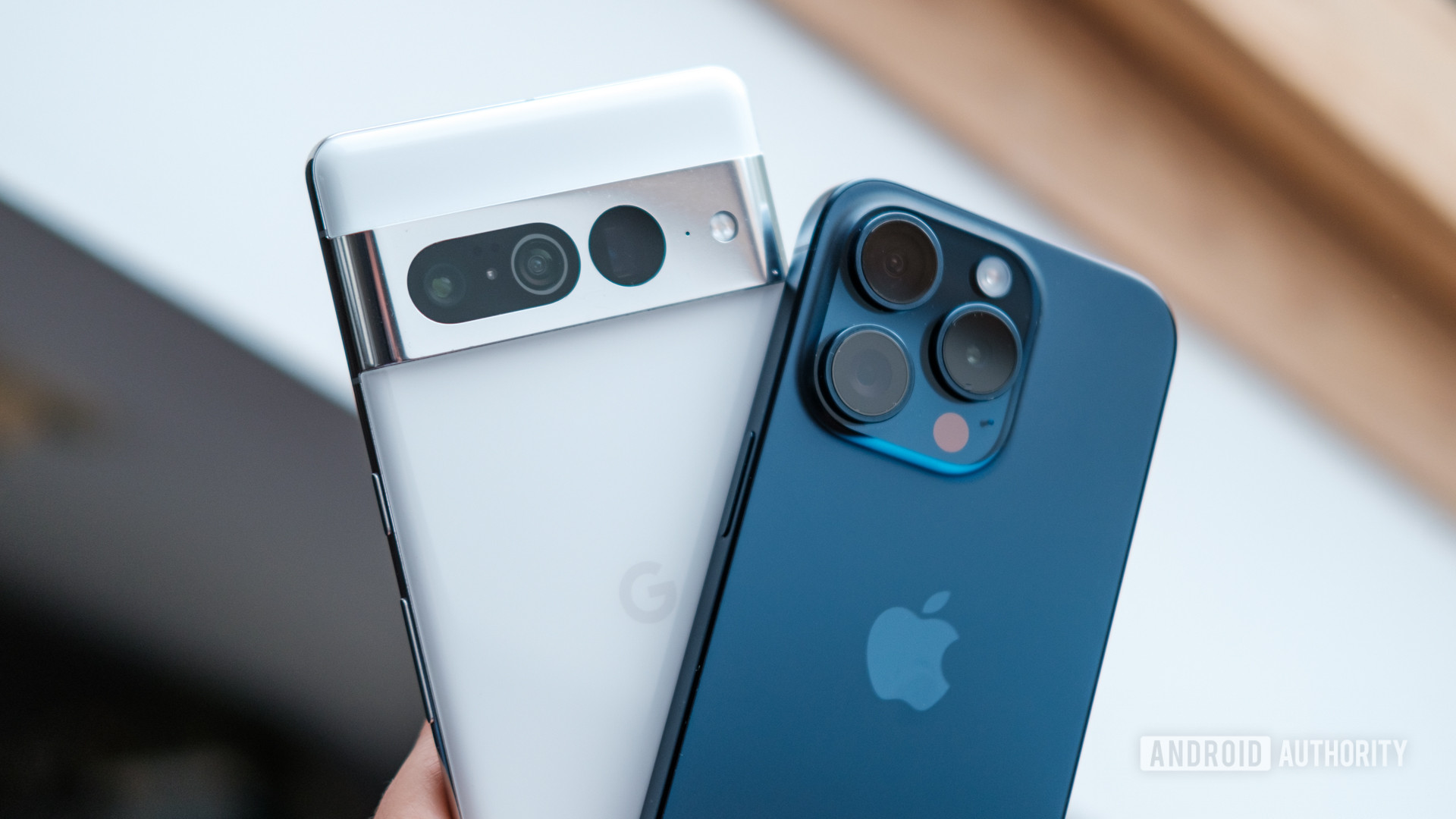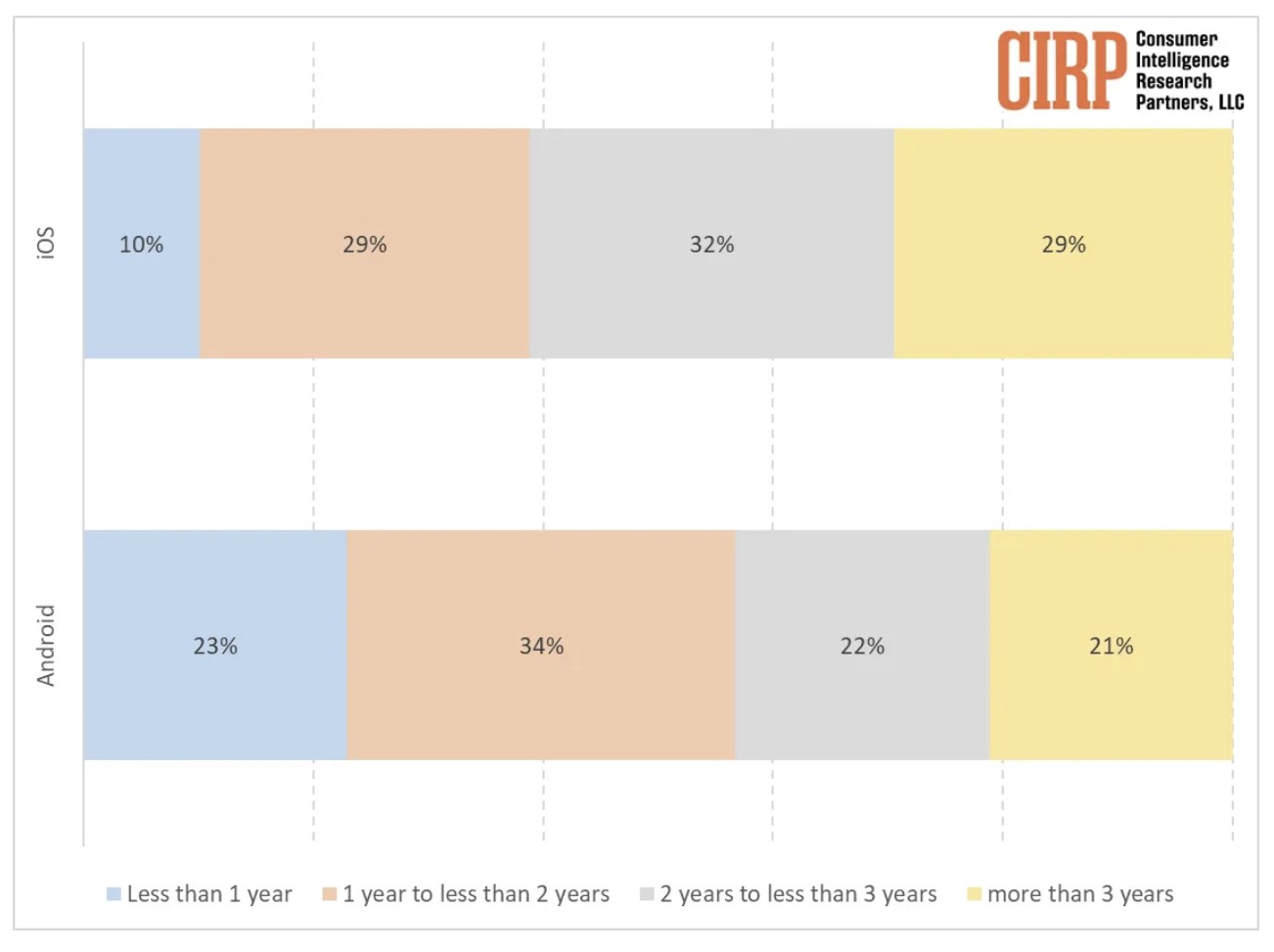Affiliate links on Android Authority may earn us a commission. Learn more.
People keep iPhones longer than Android phones. Here are theories as to why.
Published onOctober 27, 2023

- A recent report suggests iPhone users keep their phones longer than Android users.
- One theory for why is that more choices of Android phones creates more opportunities for upgrade considerations.
- The report suggests iPhones might be more durable than Android phones, but we don’t buy that.
In the United States, the population is split down the middle regarding mobile operating systems. On one half of the pie, you have iPhones, and on the other, you have Android phones. However, this refers to usage, not sales. Consumer Intelligence Research Partners (CIRP) showed last week that Android phones outsell iPhones yearly by a wide margin in the US.
If there’s a 50/50 split between Android and iOS usage in the US, but people are buying more Android phones than iPhones each year, that heavily suggests that Android users upgrade their phones more often than iPhone users. As it turns out, a more recent report from CIRP indicates that is the case.
Check out the chart below to dive deeper.
iPhone vs Android user upgrades
The chart above is a bit confusing, so let’s break it down. The first blue chunk shows that 10% of iPhone owners kept their phones for a year or less before upgrading to something else, meaning that 90% of iPhone users keep their phones for more than a year. Meanwhile, 23% of Android users fit that category, or more than twice as many. Even when you move to the 1-2 years bracket, you still have Android users upgrading faster by a hefty margin.
While this is interesting, the real question should be why. Why is it that Android users upgrade phones quickly while iPhone users stick with what they’ve got?
In the past, an easy explanation would be software updates. iPhones see upgrades to new versions of iOS for over five years in most cases. By contrast, the Android phones of yesteryear were lucky to get two years of support.
This is not really true anymore, though. Samsung — the world’s largest smartphone vendor — supports almost all its phones for four years. This has pushed other vendors to offer similar promises, with Google just recently topping them all with seven committed years of software support for the Pixel 8 series.
CIRP has some theories as to why this might actually be happening.
Theories on why this might happen
The first theory CIRP presents is that because Android phones are, on average, less expensive than iPhones, owners are more apt to upgrade. This is an interesting theory, but it falls apart once you realize that some of the best-selling Android phones in the US are priced comparably to iPhones, to say nothing of the various foldable phones that get more popular each year and are wildly expensive.
Another theory is that iPhones are more durable than Android phones. However, we don’t buy that for a second. Android phones and iPhones are basically made of the same stuff these days. They’re all just glass sandwiches with a metal rim. In fact, the lower-end Android devices being made of plastic should mean the majority of Android phones are more durable than iPhones, since dropping them won’t shatter the back.
The best theory CIRP presents is that a wealth of choice nudges Android users to upgrade more often. In other words, since there are only a handful of iPhones each year that launch all at the same time, there’s only one major push for iPhone users to upgrade annually. Android users, though, get pushed to upgrade not only by multiple launches each year from their brand of choice but also from competing brands. More temptation = more upgrades.
What theories do you have? Toss them into the comments and let us know.
